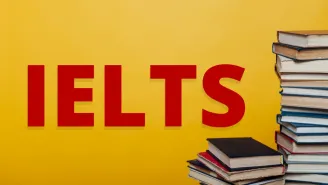Why are Finland's Schools Successful Reading Passage
Why are Finland's Schools Successful?
The country’s achievements in education have other nations doing their homework.
Paragraph A: Kari Louhivuori, the head of Kirkkojarvi Comprehensive School in Espoo (a district in the western part of Helsinki), made the rather audacious choice to try it by Finnish standards. Perhaps one of his students, who was an immigrant studying in 6th grade, was not able to cope with his classmates despite the hard work his tutors were putting in. Because of this, the head of the school decided to keep the students off the classes for one year. The result was astonishing: the nation's standard of all the curricular activities like reading, math, and scientific literacy standards had enhanced; all of this was due to the efforts of the excellent teachers, who take every step to help their students. Louhivori personally chooses Besart as his student for a particular year. Besart studied physics, economics, and mathematics, and in his spare time, he would read novels, which he could choose from Louhivori’s huge stack behind his desk. He became an avid reader and devoured many books. By the end of the year, he was able to recognise his capability of learning.
Paragraph B: The account of a single child who saved sheds light on Finland's outstanding academic accomplishments. Although its educational system started to alter 4 decades ago, the tutors were ignorant of how well it had performed until the early 2000s. The highest-ranked global readers among the adolescents were from Finland, this was reported by PISA data. On more than 40 websites all around the world, a 15-year-old takes a standardised PISA exam. They became mathematical kings after around 3 years. Finland ranked first among the 57 nations that participated in this science competition in the year 2006. The nation came second in the world in science, 3rd globally in reading, and 6th in maths in the latest PISA scores.
Paragraph C: The higher authorities in the US have introduced competitiveness in government schools as an attempt to enhance academic performance. Bill Gates, a respected businessman, is among a group of philanthropists and a stock market investor who has recently put money into private schools, the number of which has spiked up in a decade. Even President Obama thought that competition was the solution. One way to tackle this situation is to make it compulsory for teachers to evaluate through exams and other methods to get government subsidies, which are unacceptable in Finland. A Helsinki administrator with 24 years of classroom experience, Timo Heikkinen, alleged that instructors "would their clothes." "If you just measure the numbers, you miss the human side."
Paragraph D: Standardised tests are not mandatory for students in Finland, except for exams taken after high school. Not a single student, organisation, or region competes with one another. Finland’s public funds are usually utilised to support and help the education system grow. Federal officials, including national and sub-national representatives, are administered by academicians rather than businessmen or politicians, or any other such authorities. The nation has to give targets to every school, moreover, recruit teachers with the same qualifications. Hence, the area where a child grows up hardly matters as the facilities given to all the institutions are the same.
Paragraph E: It is almost impossible for a student would come to school with an empty stomach. Finland offers up to 3 years of leave to the mother after she delivers a child, subsidised childcare for families, and all five new preschools with socialising emphasis. Additionally, the government provides caregivers of all the children a monthly stipend for each child up to the age of 17 years, which is roughly 70 kilograms. Institutes provide free counselling, food, and if required, travel services are also proffered.
Paragraph F: Finland’s institutions were not frequently marvellous during the early 20th century. Elite education was only available to the wealthy. The daring decision to emphasise public schools as the best method for growing the economy and overcoming the Great Depression was adopted by the Finnish senate in 1963. School systems were combined into a single system of comprehensives for students from the adolescent age. The teachers from throughout the nation developed an education level that offered recommendations rather than guidelines for just about any of them to follow. Along with Swedish, which is the second official language, children start learning language skills at the age of nine. The fair use of tech equipment ensured that all the instructors had an equal distribution of teaching resources to assist student learning. Higher education institutes developed together with schools from standard 10 to 12. The second significant decision was made in 1979 when it was mandated that all teachers finish a 5 year Master’s degree, a government-funded degree program in principles and application. From that moment on, doctors and lawyers virtually treated teachers with respect. Applicants began flooding into teaching programs, not because the compensation was so fantastic, but rather because independence and esteem made the world desirable. Louhivuori underlines that because we enjoy our work, we have an incentive to succeed.
Why are Finland's Schools Successful Reading Questions and Answers
Discover exciting and informative IELTS reading answers about Why are Finland's Schools Successful.






